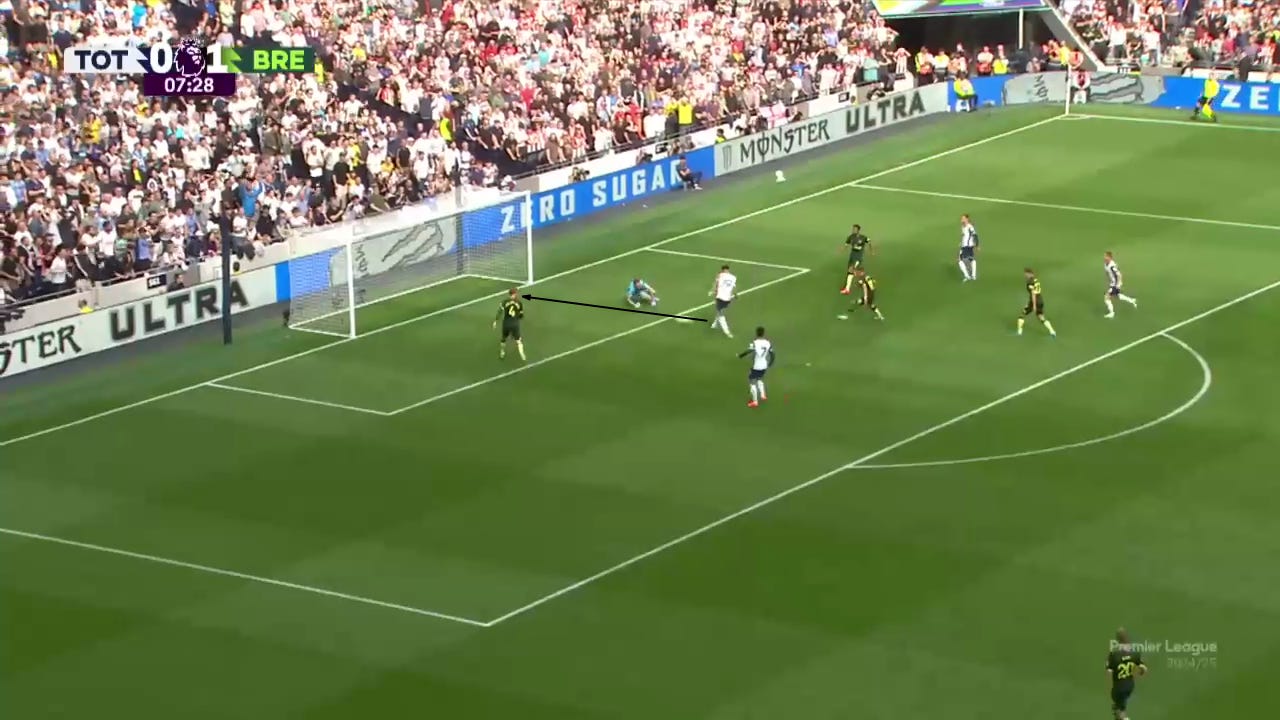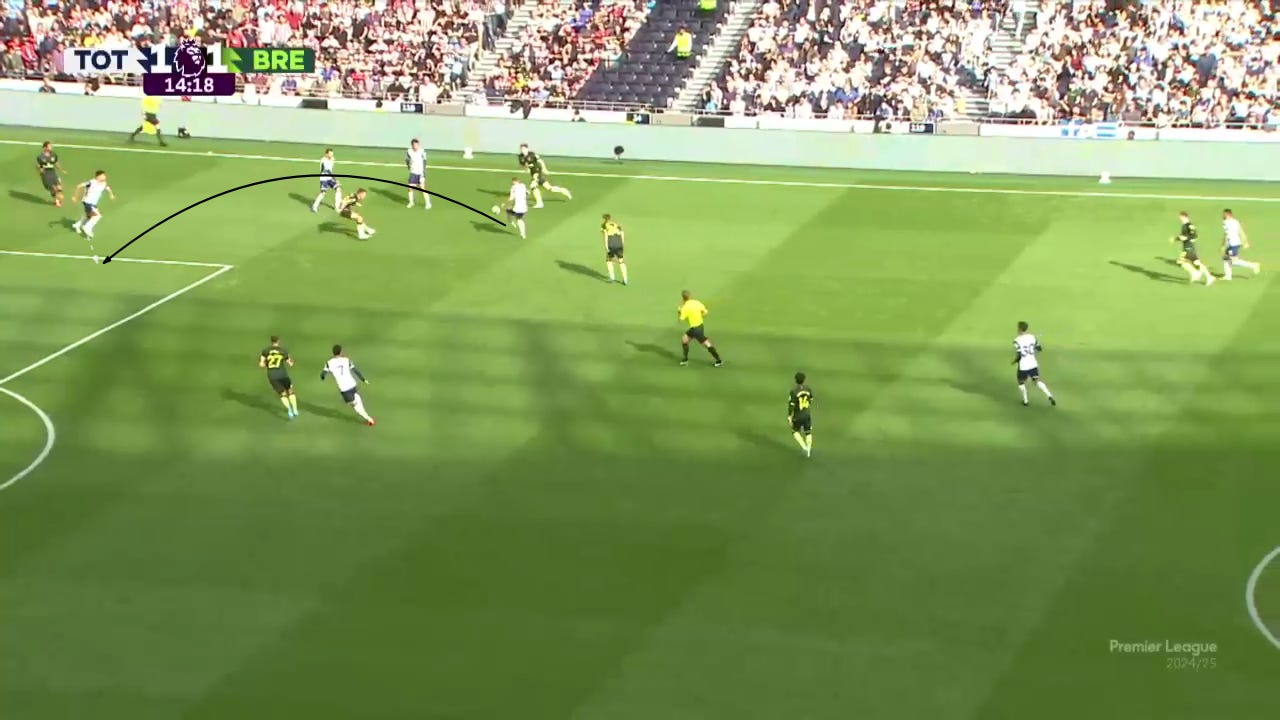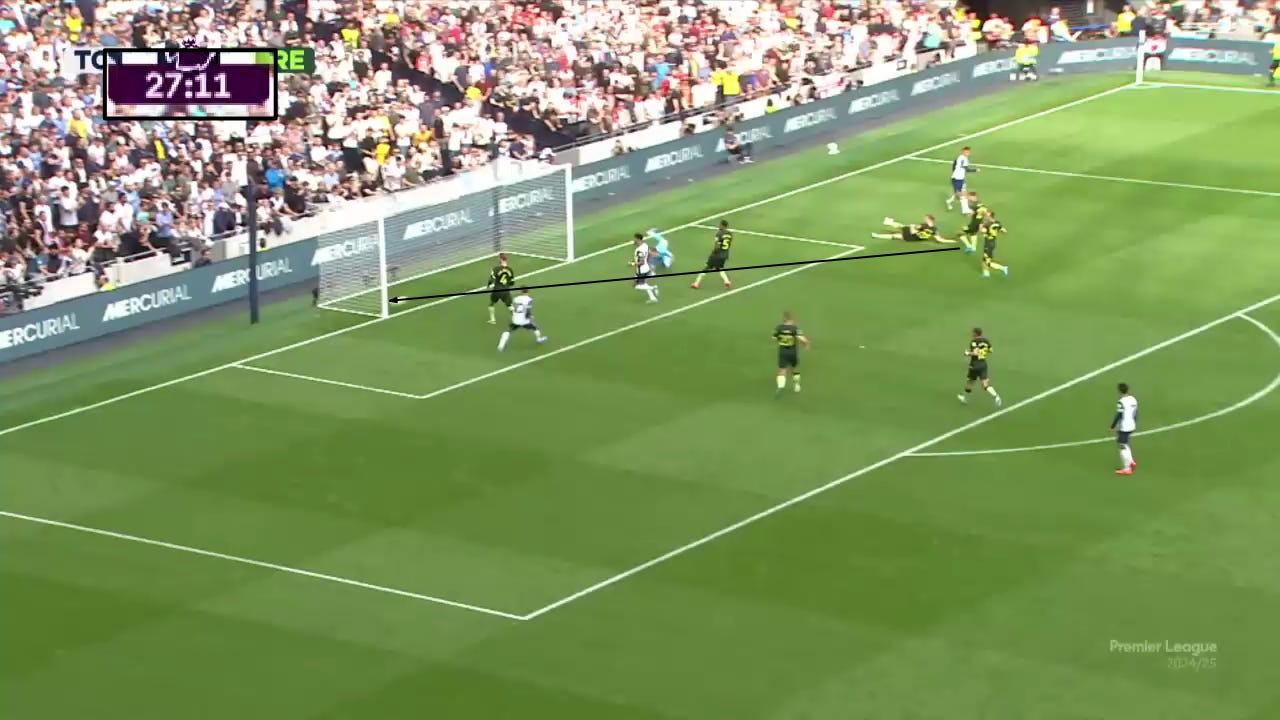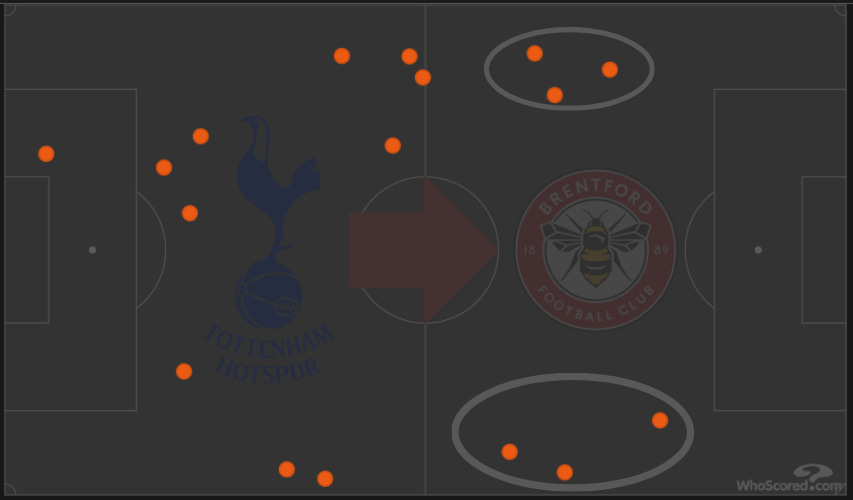Spurs vs Brentford: Silencing Communication
After the magnificent tactical performance against Manchester City on previous week, I was very curious about how would Ange Postecoglou deal with Brentford efficiency on various game phases specially during their brand new build-up style.
At first, My curiosity was to observe Spurs pressing style, where players are positioned, and who they press if they decided to counter Brentford build-up in first place.
Whilst watching the game what unexpectedly excited me the most wasn’t that “where and who?” questions, but “How?” was the right question to be asked. so what you’re about to read is a very detailed analysis observing Postecoglou’s pressing tactically but most importantly, technically.
Tactically
Some coaches believe that the direction where your opponent try to keep you away from, is the one where you should end your process in, due to many elements but most importantly that by the time opponent players care more and more about where they’re directing you with overloads, so a combination or a switch would be very dangerous way of escape and attack the opposite side.
After watching Manchester City vs. Brentford on the previous week, That idea got solidified for me specially with those switches towards Collins, check the analysis here. But what Postecoglou did was the most logical solution for Brentford build-up.
Dominic Solanke forms Spurs first pressing line, splitting the field into two halves by directing Flekken away from their favorite side, Kulusevski and Maddison marking Janelt and Yarmolyuk respectively (Brentford pivots), Romero stepping out of the line to jump on Damsgaard, who’s playing Wissa’s role against Manchester City, whilst Porro and Johnson marking Potter and Collins on flank.
So it’s clear now that Postecoglou knew that sooner or later Thomas Franks' team would be able somehow to reach the left flank (Tottenham’s right), so he simply splitted his pressing scheme into two sides; the right one was man oriented pressing to solve Brentford overloads, the left was more of a hybrid one which will adapt later on according to ball position.
Communication through passes in football is a crucial aspect of team play and tactical cohesion. It refers to how players use passing to send messages to their teammates beyond just moving the ball.
For example, if a player sends pass to his teammate in front of him, it’s a “message” to him to run in space, if he overhits the ball to his teammate feet while he’s being pressed from the back, it’s a “message” to hold up play.
Silencing Communication
To stop such principle, firstly you need to force your opponent to specific action; for example if “Team A” is jumping each time “Team B” players receive in foot, then “Team B” has to adapt and pass into space instead. that was superficial example for a better understanding.
Delving deeper; Team A in (Sky Blue), Team B in (Navy Blue).
If a player curving his run from “Team A” towards “Team B” center-back, he’s minimizing his passing options to limited\sided ones (Marked in triangle).
So now “Team A” can expect potential directions where passes could be sent to, and then interact according to this angles by putting pressure into specific direction not only to annoy the carrier or force him to an option, but to win possession.
Technically
Stage is set according to previous tactical explanations, now let’s dive into some technicalities.
Solanke curving his run towards Flekken, shadow covering Pinnock and isolating Brentford left side. So now Flekken has two options, first is to send a short pass to his pivot on the space on his left foot (away from Spurs press), second is to send a direct long ball towards Mbeumo.
What was truly impressive is that Postecoglou had an answer for both scenarios. If the Bees' keeper passed centrally, Maddison would direct his pressing towards the space where Yarmolyuk might receive the ball.
And if the keeper attempted a long pass, van de Ven (white column) anticipated the ball's path. Moreover, he used its bounce as a pressing trigger, jumped in front of Mbeumo, and intercepted it.
At another moment, Kulusevski pressed Pinnock while blocking all wide options, provoking him to play centrally. He also narrowed the angle to Janelt's right foot. Maddison read the situation and moved quickly into the space on Janelt's left side.
Wider angle shows Spurs trapping Brentford left side, using the sideline as a defender as well. If Kulusevski wasn’t putting pressure on this direction, Pinnock would simply passes to space on Janelt’s right hand, letting him drive in a space filled with man marked players (trigger to drive), but Pinnock had no other option.
Short pass from Pinnock made it even worse. Maddison intercepts.
Flekken saves the English playmaker shot, ball falls to Solanke who finds the back of the net. Tottenham (1) Brentford (1).
Flank trap situation; Solanke with Pinnock, Maddison marks Yarmolyuk, Johnson pressing Collins on the line.
Johnson uses his front foot to deny any access down the line for The Bees. so now Collins has no option except for Yarmolyuk.
Meanwhile both Maddison and Solanke closing both directions for Yarmolyuk so Collins sends the pass centrally in his teammate’s feet (message to hold or link up play).
The Ukrainian responds to this communication attempt and try to find his teammates in space, but with Maddison closes him down, whilst Kulusevski anticipating ball route with his chest towards the space (Silencing communication).
The Swedish midfielder wins possession and tries to find Solanke in behind.
Throw-in, Damsgaard receives, Maddison instanly putting pressure on him, preventing him from reaching any central options, and with Pinnock followed by Solanke, a pass to Collins was inevitable.
Johnson (white column) reads the situation earlier than anyone and starts to move towards Collins.
With Damsgaard being under intense press from Maddison he ran out of options, he sends a clumsy pass that Johnson anticipated, possession won, and a dangerous counter-attack from Spurs again.
Another throw-in for Brentford, Janelt scans the taker once van den Berg receives, for potential 3rd combination, Maddison starts on the same line, offering himself both pressing directions according to Janelt’s reaction.
Once Janelt adjsut his body shape to the outside, Maddison changes his pressing direction anticapting their next move.
Another anticipation. Another interception.
Ten seconds later.. Tottenham (2) Brentford (1).
According to whoscored.com Tottenham made 6 interceptions inside Brentford half, which is surely an abnormal number, reflects high level of anticipation and directed pressing traps.
On the other hand, Brentford made 3 errors around their box, one of them leaded to a goal, which easily pointing at build-up issue.
Conclusion
In summary, Ange Postecoglou's tactical approach against Brentford showcased a masterclass in pressing strategy and communication disruption. By effectively splitting the pressing scheme into two distinct sides, Postecoglou adapted to Brentford’s build-up style, nullifying their attacking options and forcing them into predictable plays.
Furthermore, the technical execution of these tactics was impressive. Spurs capitalized on pressing triggers and strategic positioning to intercept passes and regain possession, demonstrating a clear understanding of how to communicate and read the game effectively.
























